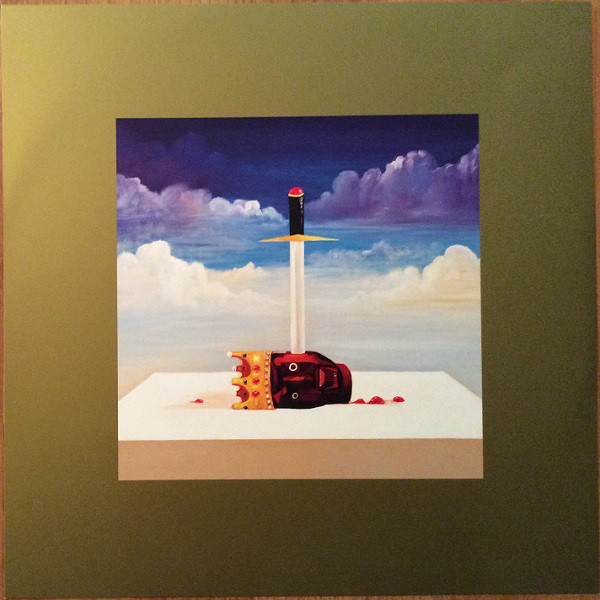

These art-schooled rockers attached ideas they had learned from art and philosophy, applying them to the formerly teenaged rock ‘n’ roll form as they started to make the case that rock ‘n’ roll was more than just entertainment it was a way of life, and a means of art. However, as art-schooled British Invaders (the Rolling Stones, the Who, and the Beatles) sought to distance themselves from the idea of teenage rock ‘n’ roll and its reliance on singles, they began to work on albums as unique, standalone works. The record would consist of a few original songs bolstered with a few covers to fill it out. Significantly, a large amount of the music that followed classical onto the LP was the increasingly bohemian and “adult” music of jazz and folk.Īs pop musicians started making use of the format, it was to follow a successful single with something more substantial for fans to spend their money on, essentially so the record company and the artist could make more money. Crucially, the quick turnover of the pop single compared to the supposedly “timeless” classical works, saw pop music regarded as a more commercial, and therefore less authentic form, as it was seen to be corrupted less by the ever-changing tides of commerce. Pop music sold and dated quickly it was considered to be an ephemeral teenage thrill. The pop single (45 RPMs), by contrast, was mixed in mono for radio, inexpensive speaker systems, and large groups of people. The long-playing record (33 1/3 rotations per minute, or RPMs) was originally intended to be used mainly for classical music, which was listened to by generally male and definitely white adults with expendable income who would listen closely to the music on a well-maintained, expensive home hi-fi system. In the history of the LP, one of the most important issues is that of audience. (“Reconsidering Rock”, in The Cambridge Companion to Pop and Rock, New York: Cambridge University Press, 2001, 109) Instead, the styles, genres and performers that are thought to merit the name ‘rock’ must be seen as serious, significant and legitimate in some way. The idea of rock involves a rejection of those aspects of mass-distributed music which may be dismissed as worthless ‘pop’ - the very opposite of rock. As the musicologist Keir Keightley puts it: Key to this is the understanding of rock as more than just the sound of distorted guitars, but also as a discourse surrounding what music is. It is, then, important to look at the history of the long-playing album and how it relates to popular music being taken seriously that is, as high art and not a disposable pop trinket. As the musicologist Richard Osborne writes in his Vinyl: A History of the Analogue Record, “Our idea of what constitutes a classic long-form recording remains tied to the aesthetics of the 12″ vinyl disc” ( Vinyl: A History Of The Analogue Record, London: Ashgate, 2012). West’ albums tie into how we perceive the long-playing (LP) record and its place in popular culture. This isn’t to say that before West there weren’t hip-hop albums considered to be great art (see Illmatic and Enter the Wu-Tang), but rather to say that West has created a world where Brown can cite Love’s Forever Changes and Radiohead‘s Kid A as influences, while featuring samples from This Heat and Gong on his records. Whilst West’s lyrical themes of insecurity and introspection are often discussed as a major influence on a whole new generation of rappers (notably Drake), his use of the album as a cohesive work in the rock tradition has had a large influence on experimental, critically adored works like Danny Brown’s Old (which is divided into two contrasting “sides” like David Bowie’s Low) and Kendrick Lamar’s Good Kid, M.A.A.D City (a full-on concept album). Part of West’s unique appeal to both hipsters and hip-hop fans can be found in his synthesis of a wide variety of musical influences, including hip-hop, electronic music, soul, orchestral music, and, importantly, a heavy influence from art-rock. But why is there such love for the man, who United States President Barack Obama famously called “a jackass?” West’s albums, from the chipmunk-soul of The College Dropout to the proggy excesses of My Beautiful Dark Twisted Fantasy - to say nothing of Yeezus‘ Dadaistic skronk - all sit in the back catalogue of one of the most critically acclaimed artists currently working. West’s work has received canonisation from critics in a manner previously almost unknown to rap music. At first, this label seems deliberately provocative, but his high critical praise is far from the insane ranting of a single zealot. Kanye West is, according to Atlantic writer David Samuels, “America’s Mozart”.


 0 kommentar(er)
0 kommentar(er)
